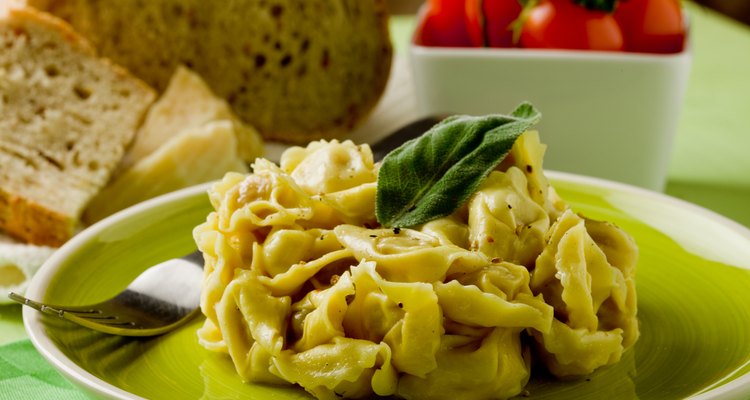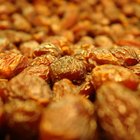
Francesco Dibartolo/iStock/Getty Images
The pungent earthiness of sage combines with the richness of butter to create a sophisticated flavor profile that brings out the best in pasta, poultry, fish and vegetables. Gardeners with a bumper crop of fresh sage get an added benefit: Freezing herbs in butter is a time-honored way of preserving their freshest flavors. If you don't have access to fresh herbs, you can substitute dried -- not powdered -- sage. Just use one-quarter to one-third the amount in your recipe. Whether you make a batch of sage butter to freeze or whip up browned sage butter on the fly, it's a savory addition to your recipe repertoire.
Easy Sage Butter
Let the butter soften at room temperature for at least 15 minutes. It should be soft enough to spread, but not so soft that it has begun to melt.
Clean stems from the sage leaves. Rinse them and pat them dry with a paper towel. Chop the leaves finely, using a rocking motion for more control and more even cutting.
Combine the sage and softened butter in a bowl, stirring them together until the chopped herb is evenly distributed.
Beat the sage butter at low speed with an electric mixer until it is creamy, adding in a dash of lemon. Alternatively, transfer the sage butter to a small food processor bowl and process it on low until the mixture is light and creamy.
Scoop the sage butter onto a piece of waxed paper, shaping it into a log about the size of a stick of butter. Wrap it in waxed paper and store it in a resealable plastic bag in your freezer.
To use, slice off the amount needed for your recipe and return the remainder to the freezer. The sage butter will keep frozen for several months.
Browned Sage Butter
Remove the sage leaves from the stems, rinse them and pat them dry with paper towels. If you're working with small leaves, spread them in a single layer on 1 sheet and lightly press a second paper towel over them to absorb water.
Chop the sage leaves finely, using a crisscross rocking motion to get pieces that are roughly even in size and shape.
Place a stick of butter in a large saute pan over medium heat. Allow it to melt without stirring it. Keep cooking it over low heat for about 3 minutes after the butter is completely melted, until the milk solids form browned bits in the bottom of the pan and the butter has a nutty aroma.
Add the chopped sage to the pan all at once. Stir with a wooden spoon or spatula, scraping up the browned bits at the bottom of the pan, until the sage leaves are evenly distributed throughout the butter.
Spoon the sage butter over vegetables, fish or meat just before serving.
Related Articles

How to Freeze Thyme in a Bag

How to Use Butter Powder

How to Make Rubbed Sage

How to Crush Basil
Easy Tomato Basil Soup Recipe

How To Dry Parsley in a Convection Oven

How to Make Crab Bisque

How to Glaze or Sweeten Canned Carrots
Simple French Onion Soup Recipe

How to Roast Maple and Brown Sugar ...
The Ultimate Healthy Carrot Cake Recipe

The Difference in Fresh or Dry Oregano

How to Make Pico de Gallo

How to Cook Kale in a Pan With Butter ...

Is Cashew Butter Healthy?

How to Cook Chinese Lettuce

How to Cook Cactus Leaves

How to Mince Celery

How to Cook With Pineapple Sage

How to Refresh Dried Fruits: Raisins
References
Writer Bio
Deb Powers is an avid urban gardener who works with a community collective to promote sustainable urban agriculture and build partnerships between local business owners and community organizations. Powers serves as a social media and marketing consultant for local non-profits and businesses, and is collaborating with a coffee roaster to publish a cookbook highlighting coffee as a culinary ingredient.
Photo Credits
Francesco Dibartolo/iStock/Getty Images